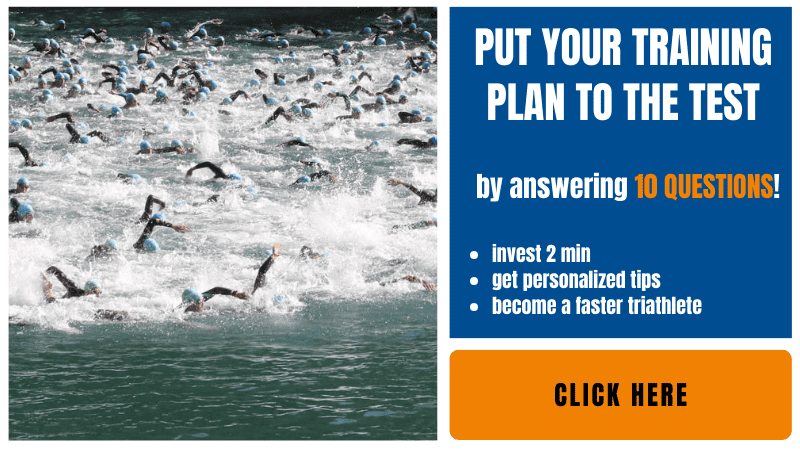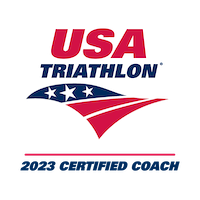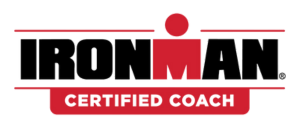I’m now planning longer triathlon events for the next years, so I decided to research what makes triathlon bikes so special and see if it makes sense to invest in one.
The triathlon bike’s main advantage is its geometry: it is lowering your upper body and moving it forward to a so-called aero position. It won’t give you a significant time benefit vs. an optimized road bike with aero bars on the bike portion, but it will definitely keep your legs fresher for the run portion.
Let’s check in detail how much time a triathlon bike will save you on both the biking and the running courses.
HOW MUCH FASTER IS A TRIATHLON BIKE
This is by far the first question on the mind of triathletes when thinking about triathlon bikes.
I remember looking for it a couple of years ago and saw websites and forums stating that tri bikes will make you 5-10 min faster on an Olympic distance bike course. Most websites fail to mention (they want you to buy a tri bike!) that it really depends on which bikes you compare. The difference is, in fact, not so spectacular, at least during the bike course.
ON THE BIKE COURSE:
The best study I found is the one from Cycling Weekly and Boardman. They concluded that most of the gain in aerodynamics comes from having an optimized aero position. They didn’t see a significant difference between an optimized road bike with clip-on bars and a time trial bike.
Here is an extract of their results:
| Bike & Position | Watts required | Watts saved |
|---|---|---|
| Road bike, hoods | 298 | Baseline |
| Road bike, clip-on bars | 232 | -66 |
| Road bike, clip-on bars, optimized | 215 | -83 |
| Time Trial Bike | 212 | -86 |
You can surely be 5-10 min faster on an Olympic race if you compare the time trial bike and someone on the hoods, but against an optimized position on clip-on bars, the difference is much smaller.
Here is the full video:
ON THE RUN COURSE:
In my research about tri bikes, this is what surprised me the most!
Howard Hurst and Catherine Jones studied the effects of bicycle geometry on Sprint triathlon running performance. They concluded that the running time improved significantly following cycling with an 81° seat tube angle (representing aggressive triathlon bikes like the Canyon Speedmax with 80,5°, most other triathlon brands are around 77°) vs following cycling with a 73° seat tube angle (representing most road bikes).
Here is their illustration of the seat tube angles for (A) 73° and (B) 81°:
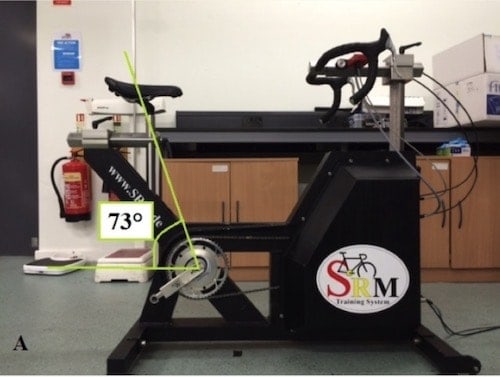
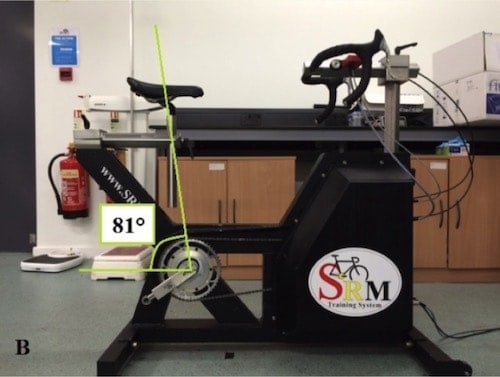
On their sample, the triathletes were running 5K in 27min59s after cycling with a 73° seat tube angle bike vs. 27min10s with an 81°. That’s 49 seconds faster!
Of course, the time difference would be less for faster triathletes, but it can still be the difference between 1st and 2nd place.
Some other key highlights I noted from their study:
- Interestingly their bike times didn’t change significantly: 36min23s vs. 36min21s.
- Out of the 10 triathletes in their sample, 3 of them didn’t show improvement in running time. Those 3 were the only ones who never rode a bike with such a geometry before. Your body needs some time to adapt to this position!
- They are referencing another study that had similar findings over an Olympic distance triathlon. This study pointed out that the biggest time difference occurs during the first 7 km of the course.
IS A TRIATHLON BIKE MORE COMFORTABLE
When properly fitted, both a road bike and a triathlon bike should feel equally comfortable. You might need some time to adapt to the new position, but you should definitely not feel any pain. Personally, I have done a bike fit where some adjustments were made (speaking about some mm). It literally removed the pain in my knees.
Depending on the distance and the course you are riding, some features of a triathlon bike can be advantageous over a road bike:
- Gear shifter: having a triathlon bike allows you to stay in the aero position while changing gears. Having a road bike with clip-on bars will force you to go in and out of your aero position.
- Integrated nutrition: there are more possibilities for integrated nutrition systems for triathlon bikes. It is simply more comfortable for longer rides.
- Storage: as for nutrition, triathlon bikes generally have storage areas on the bike.
and some can be less favorable
- Gearing: generally speaking, triathlon bikes come with a groupset made for flat roads. If you plan to do steep climbs, you might need to consider changing your gear set up.
- Brake: most of the time, you will be on your aero bars where no brake is available. It can be really dangerous for group rides. Hence most group rides are not authorizing riders with a tri bike.
HOW TO MAKE YOUR ROAD BIKE MORE AERO
As mentioned previously, most of the gain on the bike course is made by having a more aero position.
The two easiest steps you can take are:
- Adding aero bars: there are plenty of options available from roughly $30 to $200. Depending on the position you want to hold, the bars can be curved differently, the most popular following an S or L curve.
If you think about buying a set, make sure to check my article: “8 Things You Need To Know Before Buying Aero Bars“. - Changing your seat position: once you add a clip-on bar, you will soon realize that the position is really unstable 🙂 Moving the saddle up and forward will help with fixing that. The best here would be to get a bike fit done by a professional.
I also need to change my saddle for a split nose version to release the saddle pressure I experienced with a flat saddle while riding on the aero bars.
For more details about gains with your helmet, skinsuit, and more, check our article: “How to improve your triathlon time.“
FROM WHICH POINT ON SHOULD YOU CONSIDER BUYING A TRIATHLON BIKE
If you are fighting for podium places and have the budget, investing in a triathlon bike can be really beneficial. I personally really like the feeling of overtaking someone riding a fancy triathlon bike 😀
As I am going for longer distances and want to have the comfort of a triathlon bike, I fixed myself two goals I want to achieve before pulling the trigger:
- reach an FTP of 300 watts (~4,2 w/kg)
- run below 40 min for a 10 km
Those are ambitious enough for me that I will have some time to save money, and once I reach them, the risk of having someone overtaking me with a road bike will be lower 🙂
If you expected a justification for you to buy a triathlon bike, I’m sorry that I disappointed you 🙂 You now know what you can achieve with an optimized road bike set up and see if investing in a triathlon bike would make sense for you.

